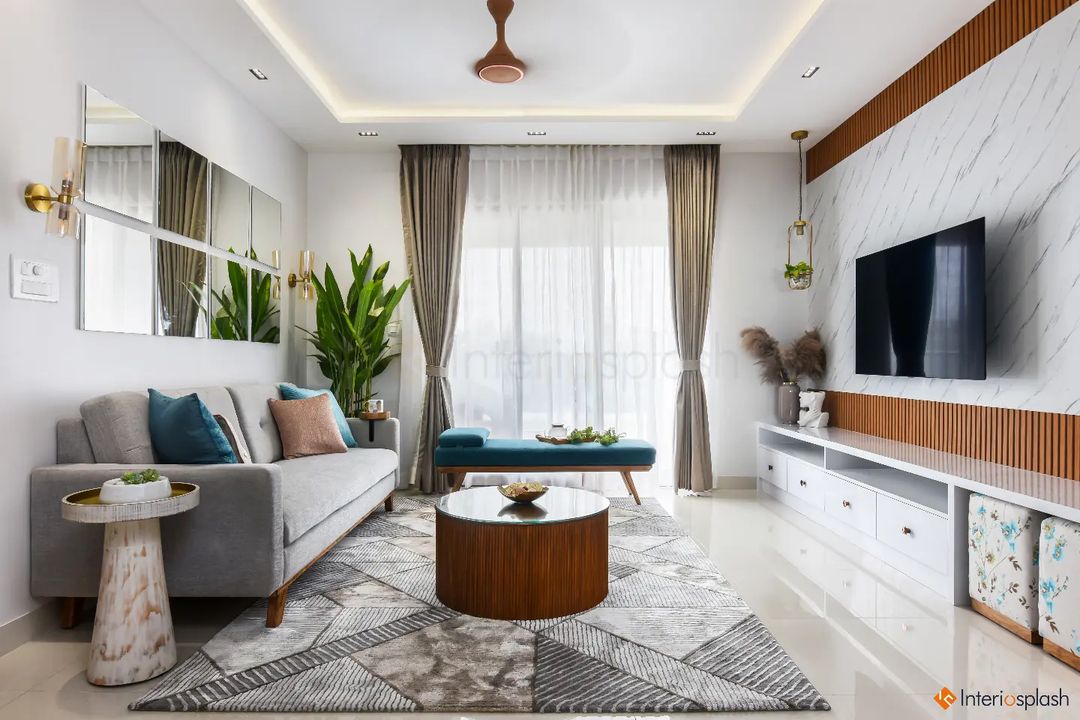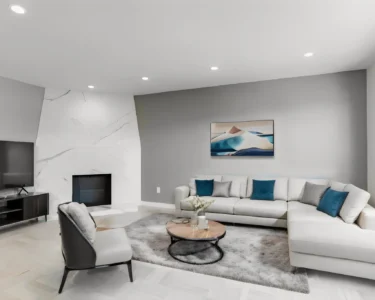Introduction
In the world of interior design, transforming small spaces is both a challenge and an opportunity. With the rise of urban living and compact apartments, the art of maximizing every square inch has become increasingly vital. The best interior designers in JP Nagar and beyond have mastered the techniques needed to turn limited spaces into functional, aesthetically pleasing environments. This article explores how these professionals approach small space design, offering insights into their strategies, tips, and the impact of innovative solutions.
Understanding the Challenges of Small Spaces
Limited Square Footage
The most apparent challenge in small spaces is the limited square footage. Every inch counts, and designers must be creative to make the most of the available space. This involves strategic planning and innovative solutions to ensure that the space is both functional and visually appealing.
Storage Constraints
Small spaces often lack adequate storage, leading to clutter and a sense of disorganization. Designers must find clever storage solutions to keep the space tidy while maintaining a stylish look.
Visual Perception
Creating a sense of openness in a small area is crucial. Designers need to use techniques that enhance the visual perception of space, making it feel larger and more airy.
Key Strategies Used by Interior Designers
1. Utilizing Multi-Functional Furniture
One of the most effective ways to maximize a small space is by incorporating multi-functional furniture. Pieces like sofa beds, expandable tables, and ottomans with storage serve dual purposes, reducing the need for additional furniture and freeing up valuable space.
Examples:
- Sofa Beds: Ideal for studios or guest rooms, these transform from a couch into a bed with ease.
- Expandable Tables: Perfect for dining areas, they can be extended when needed and compacted when not in use.
- Storage Ottomans: Serve as both seating and storage, helping to reduce clutter.
2. Optimizing Vertical Space
When floor space is limited, looking up can be a game-changer. Designers make use of vertical space by installing shelves, hanging storage, and high cabinets. This approach helps to keep the floor area open and uncluttered.
Examples:
- Wall-Mounted Shelves: Provide storage without taking up floor space.
- High Cabinets: Utilized in kitchens and bathrooms to maximize storage.
- Hanging Racks: Ideal for kitchen utensils, bags, or other items.
3. Incorporating Mirrors and Glass
Mirrors and glass surfaces are classic tricks used by designers to create the illusion of more space. Mirrors reflect light and views, making a room feel larger and brighter. Glass furniture and partitions also contribute to a sense of openness.
Examples:
- Full-Length Mirrors: Can visually expand a room and reflect light.
- Glass Tables: Offer functionality without visually obstructing space.
- Glass Partitions: Separate areas without creating a feeling of confinement.
4. Choosing the Right Color Palette
Color plays a significant role in the perception of space. Lighter colors make a room feel larger and more open, while darker shades can make it feel cozier but smaller. Designers often use neutral or light tones for walls and larger furniture pieces, with pops of color in accessories and accents.
Examples:
- Light Neutrals: Such as white, beige, or light gray can make spaces feel airy.
- Accent Colors: Bright or bold colors used sparingly in accessories or artwork can add interest.
5. Smart Layout Planning
Effective layout planning is crucial in small spaces. Designers create layouts that optimize the flow of movement and make the space feel functional. This involves careful placement of furniture and consideration of how different areas will be used.
Examples:
- Open Plan Layouts: Combine living, dining, and kitchen areas to maximize space.
- Defined Zones: Use rugs or furniture arrangements to create distinct areas within an open space.
6. Emphasizing Light and Airiness
Natural light and good ventilation are essential in small spaces. Designers maximize natural light by using sheer curtains, placing mirrors to reflect light, and choosing light-colored finishes. Proper lighting, including layered lighting schemes with ambient, task, and accent lights, also enhances the sense of space.
Examples:
- Sheer Curtains: Allow natural light to filter in while maintaining privacy.
- Layered Lighting: Includes ceiling lights, floor lamps, and wall sconces to brighten the space.
Case Studies: Transformations by the Best Interior Designers in JP Nagar
Case Study 1: Urban Studio Apartment
An urban studio apartment in JP Nagar was transformed by a top interior designer specializing in small spaces. The designer used a combination of multi-functional furniture, vertical storage solutions, and a light color palette to create a spacious and inviting environment. The addition of mirrors and glass surfaces helped to enhance the sense of openness.
Case Study 2: Compact Family Home
A compact family home in JP Nagar benefited from innovative design solutions such as built-in storage, smart layout planning, and the strategic use of color and light. The designer’s approach included creating separate zones for different activities while maintaining a cohesive and open feel.
Tips for Working with Interior Designers in Small Spaces
1. Communicate Your Needs Clearly
Be clear about your needs and preferences. Share your vision and any specific requirements with your designer to ensure that the final result meets your expectations.
2. Consider Your Lifestyle
Your lifestyle and how you use the space should influence the design. For example, if you work from home, ensure that the design includes a functional workspace.
3. Be Open to Suggestions
Interior designers bring a wealth of experience and creativity to the table. Be open to their suggestions and trust their expertise in making the most of your small space.
Conclusion
Transforming small spaces is both an art and a science. The best interior designers in JP Nagar excel in creating functional, stylish environments by utilizing innovative strategies and design principles. By focusing on multi-functional furniture, vertical storage, color palettes, and light optimization, they can turn even the most compact areas into welcoming and efficient spaces. Whether you’re looking to redesign a small apartment or optimize a compact home, the expertise of skilled designers can make all the difference in achieving a beautifully transformed space.







